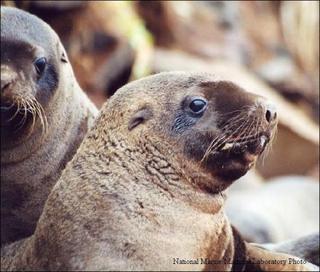Science Dominates Reactions to Steller Sea Lion Ruling

Friday, January 20 2012
The Steller sea lion fight isn't over yet.
On Thursday, U.S. District Court Judge Timothy Burgess upheld the National Marine Fisheries Service’s decision to restrict fishing in the western Aleutians to protect the endangered marine mammals.
That’s been broadly characterized as a victory for NFMS and the conservation groups that intervened in the lawsuit. But the fishing industry is rallying around the part of the court’s ruling that requires NFMS prepare an environmental impact statement.
NFMS had previously prepared an environmental assessment with a finding of ‘no significant impact,’ but this document is expected to go beyond that. NMFS will need to consider the “best available information” regarding the social, environmental and economic impacts of any proposed actions, including the existing fisheries closures.
Larry Cotter is CEO of APICDA, a community development group with Atka mackerel and Pacific cod quota. He says the statement will allow for public input on the closures and potentially introduction of new scientific research.
“There are a number of new studies that have come out that I think work in our favor - that there are other issues at play with regard to sea lion that need to be taken into account - i.e. predation by orcas.”
The study he’s referring to was released last week by Oregon State University.
Endangered species coordinator for the Alaska Department of Fish and Game Doug Vincent-Lang says the court should have evaluated the scientific merits of NFMS’ biological opinion.
“We’re very disappointed that the judge didn’t take a good hard look at the science and instead just granted deference to the federal agency in those scientific questions.”
Judge Burgess stated in his ruling that “judges are not scientists.”
Vincent-Lang says the plaintiffs have not made any decisions about whether to appeal the ruling, but they’ll meeting in the near future to discuss their options.
Meanwhile, conservation groups are largely pleased with the court’s opinion, saying that it reaffirms that NMFS used good science.
Michael LeVine is Pacific senior counsel for Oceana, an intervenor in the lawsuit, and he says that the decision emphasizes the value of an approach to fisheries management that looks at more than just commercial species. He also hopes that the federal government, the fishing industry, and conservation groups can start working together to protect the Steller sea lion, ideally outside of a court room.
“We’ve been fighting about this a long time," he says. "There was litigation from 1998 to 2003, and there’s now been litigation in 2011 and 2012. In between, [NMFS] went out and gathered a bunch of scientific information -- it’s led us right back into controversy. So, it’s our hope that we can extricate ourselves from the courts process and find ourselves in an open discussion about how best to move forward.”
Judge Burgess will make a decision about the timeline and details of the environmental impact statement after reviewing briefs from each side.
Reporting for this story by Alexandra Gutierrez and Stephanie Joyce.



